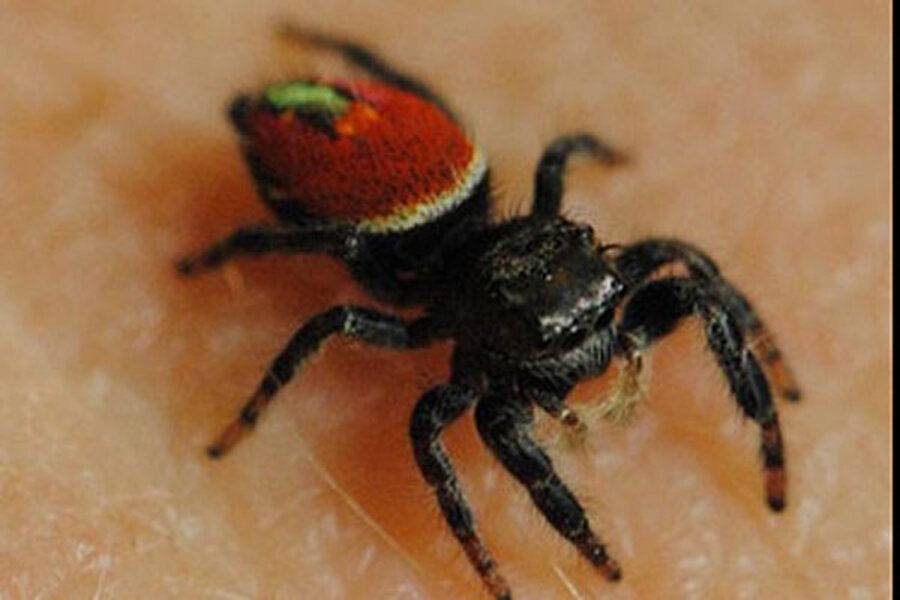Space spider dies in D.C. after surviving 55 days in space
| Boulder, Colo.
The U.S. astronaut corps has lost another member.
Nefertiti, a spider that traveled 42 million miles through space before returning to Earth in October, died after being sent to the Smithsonian's National Museum of Natural History in Washington, D.C.
The experiment was designed to determine if a spider dependent on gravity for catching its meals would be able to adapt and eat in micro gravity.
RECOMMENDED: Are you scientifically literate? Take the quiz
According to the Boulder Daily Camera , the spider was able to hunt down fruit flies in her sealed space environment on the International Space Station. The spider managed to survive despite a miscalculation on the amount of food needed for the mission.
The Johnson jumping spider (species Phidippus johnsoni). arrived at the Smithsonian's Insect Zoo this past Thursday. By, Monday it had expired.
The Boulder Daily Camera reported:
"Neffi, of a species that typically enjoys a lifespan of about one year, was 10 months old. Monday's passing of the so-called "spidernaut," according to the Smithsonian, was due to natural causes. However, the Smithsonian conceded that no necropsy was performed on the deceased arachnid.
The experiment that made Neffi famous was conceived as part of the NASA-sponsored YouTube Space Lab contest in which two student-proposed studies were selected from thousands submitted worldwide by video. Amr Mohamed, 18, of Egypt, suggested examining whether a spider normally dependent on gravity for catching its meals would be able to adapt, and eat, in a micro-gravity environment."
According to NASA, Mohamed's project was designed to look at whether jumping spiders, like the zebra and red-backed species, can adapt their hunting abilities to microgravity. Jumping spiders do not build webs for catching their food. These particular spiders hunt using their excellent vision to track and stalk prey, jumping and striking with a lethal bite -- similar to cats hunting mice.
"I have always been fascinated by science because with a handful of equations, I can explain the world around me," said Mohamed in his Meet the Winner YouTube video. "The idea of sending an experiment to space is the most exciting thing that I have ever heard in my life."
Eventually, Mohamed's experiment was designed by Colorado University. It demonstrated that a spider was able to hunt down fruit flies in her sealed space environment on the International Space Station just fine -- until her food supply ran out, explained Stefanie Countryman, the projects manager for K-12 Educational Projects at CU's BioServe Space Technologies.
RECOMMENDED: Are you scientifically literate? Take the quiz
___
Copyright 2012 The Associated Press.





